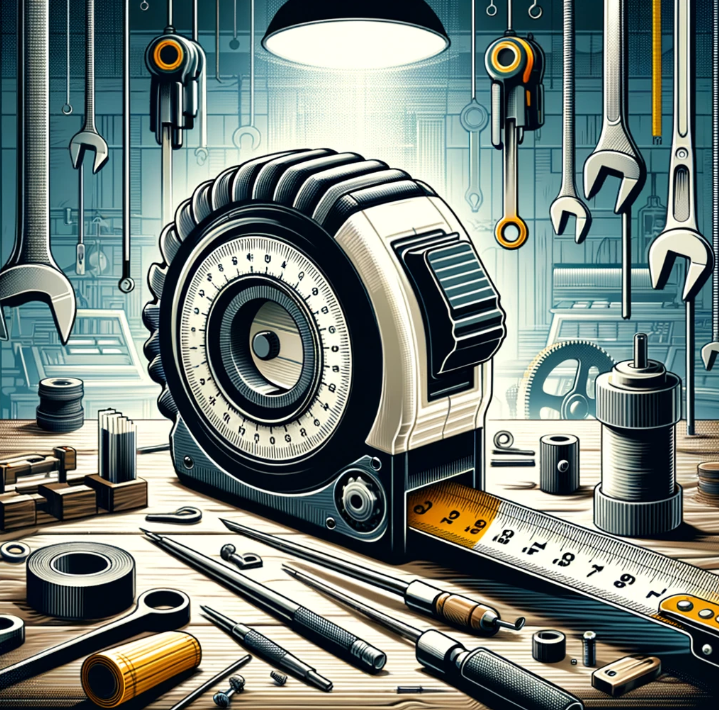Your trusty tape measure is more than just a tool; it’s a partner in every DIY project, ensuring precise cuts, flawless fits, and overall measurement success. But even the most reliable partner needs proper care and attention. This guide delves into the essential steps for maintaining and calibrating your tape measure, guaranteeing its accuracy and extending its lifespan.
Keywords: maintaining tape measure, calibrating tape measure, tape measure care, accurate measurements, DIY tips and tricks
Maintaining Your Measuring Mate:
- Cleanliness is Key: Wipe down your tape measure after each use with a damp cloth to remove dust, dirt, and debris that can affect its retraction mechanism and markings.
- Keep it Cool: Extreme temperatures can warp your tape measure and affect its accuracy. Store it in a cool, dry place away from direct sunlight.
- Avoid Moisture: Water can damage the tape and rust the metal components. Avoid using your tape measure in wet environments and dry it thoroughly if it gets accidentally exposed to moisture.
- Don’t Stretch: Stretching your tape measure, even just a little, can throw off its accuracy. Always keep it taut during measurements and retract it smoothly after use.
- Protect the Hook: The hook is vulnerable to bending. Be gentle when anchoring it and avoid using excessive force.
Calibrating for Confidence:
- Identify Discrepancies: Over time, even high-quality tapes can lose accuracy. Regularly check your tape measure against a known reference tool, like a high-quality ruler or another calibrated tape.
- Mark the Deviations: If you find discrepancies, mark them on the tape measure with a permanent marker for future reference. For example, mark “1 inch = 1 1/16 inch” if your 1-inch mark on the tape is slightly longer.
- Adjust Your Measurements: When using the marked areas, remember to add or subtract the discrepancy to your readings for accurate results.
Advanced Calibration Techniques:
- Professional Services: For high-precision projects, consider professional calibration by a tool specialist. They have specialized equipment for precise adjustments.
- DIY Calibration (Advanced): If you’re comfortable with DIY methods, you can attempt self-calibration using a flat surface, reference tool, and fine-tuning tools. However, proceed with caution and ensure you understand the risks involved.
Bonus Tips:
- Invest in Quality: Choosing a well-made tape measure from a reputable brand minimizes the need for frequent calibration.
- Multiple Measurements: When accuracy is crucial, take multiple measurements from different angles and average them to compensate for potential minor inaccuracies.
- Practice Makes Perfect: The more you use and care for your tape measure, the more familiar you become with its quirks and nuances, enhancing your ability to interpret readings accurately.
Remember: By maintaining and calibrating your tape measure, you transform it from a simple tool into a reliable partner, ensuring seamless project execution and consistent results. Now go forth, take good care of your measuring mate, and enjoy the satisfaction of precise measurements and successful DIY endeavors!
Your Trusted Tool: Maintaining and Calibrating
Your trusty tape measure is more than just a tool;...
Read MoreFinding Your Perfect Partner: Choosing the
Whether you’re a seasoned DIYer or a crafting enthusiast embarking...
Read MoreConquering the Darkness: Reading Tape Measures
Dim lighting shouldn’t dim your DIY dreams! Measuring accurately in...
Read MoreBeyond the Basics: Advanced Techniques for
Mastering the fundamentals of reading a tape measure is essential...
Read MoreMastering Tape Measure Readings: A Beginner’s
Feeling intimidated by that jumble of lines on your tape...
Read MoreConquer Your DIY Dreams: Mastering Tape
Unleash your inner handyman (or handywoman!) with the essential guide...
Read More





